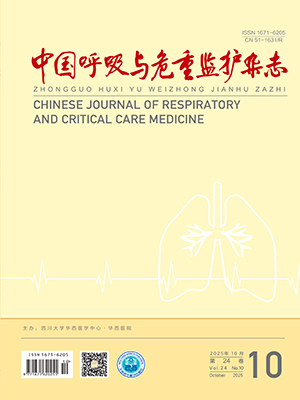【Abstract】 Objective To explore the new therapy for pulmonary fibrosis by observing the effects of insulin-like growth factor 1 ( IGF-1) treated mesenchymal stemcells ( MSCs) in rats with bleomycin-induced pulmonary fibrosis. Methods Bone marrowmesenchymal stemcells ( BMSCs) were harvested from6-week old male SD rats and cultured in vitro for the experiment. 48 SD rats were randomly divided into 4 groups, ie.a negative control group ( N) , a positive control group/bleomycin group ( B) , a MSCs grafting group ( M) ,and an IGF-1 treated MSCs grafting group ( I) . The rats in group B, M and I were intratracheally injected with bleomycin ( 1 mL,5 mg/kg) to induce pulmonary fibrosis. Group N were given saline as control. Group M/ I were injected the suspension of the CM-Dil labled-MSCs ( with no treatment/pre-incubated with IGF-1 for 48 hours) ( 0. 5mL,2 ×106 ) via the tail vein 2 days after injected bleomycin, and group B were injected with saline ( 0. 5 mL) simultaneously. The rats were sacrificed at 7,14,28 days after modeling. The histological changes of lung tissue were studied by HE and Masson’s trichrome staining. Hydroxyproline level in lung tissue was measured by digestion method. Frozen sections were made to observe the distribution of BMSCs in lung tissue, and the mRNA expression of hepatocyte growth factor ( HGF) was assayed by RTPCR.Results It was found that the red fluorescence of BMSCs existed in group M and I under the microscope and the integrated of optical density ( IOD) of group I was higher than that of group M at any time point. But the fluorescence was attenuated both in group M and group I until day 28. In the earlier period, the alveolitis in group B was more severe than that in the two cells-grafting groups in which group I was obviously milder. But there was no significant difference among group I, M and group N on day 28.Pulmonary fibrosis in group B, Mand I was significantly more severe than that in group N on day 14, but it
was milder in group M and I than that in group B on day 28. Otherwise, no difference existed between the two cells-grafting groups all the time. The content of hydroxyproline in group B was significantly higher than that in the other three groups all through the experiment, while there was on significant difference between
group I and group N fromthe beginning to the end. The value of group M was higher than those of group I and group N in the earlier period but decreased to the level of negative control group on day 28. Content of HGF mRNA in group Nand group I was maintained at a low level during the whole experiment process. The expression of HGF mRNA in group I was comparable to group M on day 7 and exceeded on day 14, the difference of which was more remarkable on day 28. Conclusions IGF-1 can enhance the migratory capacity of MSCs which may be a more effective treatment of lung disease. The mechanismmight be related
to the increasing expression of HGF in MSCs.
Citation: BAO Min,ZHANG Deping.. The Effects and Related Mechanism of IGF-1-Treated Mesenchymal Stem Cells in Pulmonary Fibrosis in Rats. Chinese Journal of Respiratory and Critical Care Medicine, 2011, 10(1): 42-49. doi: Copy
Copyright © the editorial department of Chinese Journal of Respiratory and Critical Care Medicine of West China Medical Publisher. All rights reserved




